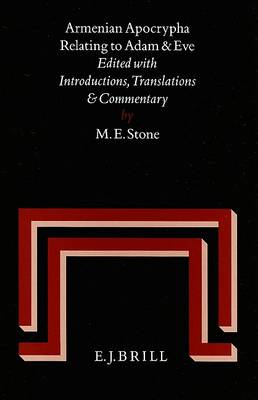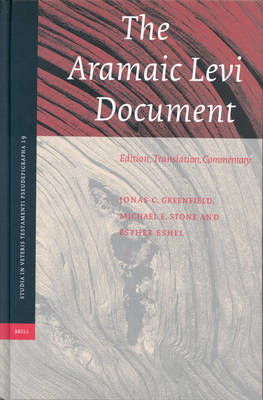Studia in Veteris Testamenti Pseudepigrapha
3 primary works
Book 9
This work contains selected essays dealing with the Jewish Literature of the Second Temple period, focusing around central themes of recent research. Stone's varied interests are reflected in this book, gathered around four main themes. Under the title "Enoch and the Testaments" are assembled studies which present and draw the implications from recent discoveries (including the Dead Sea Scrolls) as they modify the view of these two pivotal documents of ancient Judaism. Another focus of Stone's work has been 4 Ezra or 2 Esdras, a work reflecting the situation of Judaism, and especially to the understanding of apocalypticism, form a third section of the present work, while the particular development of apocryphal literature in Armenian is its fourth division.
This work presents a range of significant studies in areas standing at the forefront of the study of Ancient Judaism.
This work presents a range of significant studies in areas standing at the forefront of the study of Ancient Judaism.
Book 14
Legends about Adam and Eve are to be found in Jewish, Christian and Moslem sources. They develop the first chapters of Genesis in many and varied ways, reflecting the religious understanding of the different traditions.
In this volume 29 new texts are presented for the first time from unpublished Armenian manuscripts. The Armenian texts are accompanied by translations, introductions and commentaries, in which their roots in more ancient Jewish and Christian literature are explored.
These texts illustrate the rich development of Adam traditions in an oriental Christian tradition, with relationship to Greek, Syriac and Georgian sources. Their ramifications extend back into earlier Jewish traditions and they are keys to understanding many aspects of medieval Armenian culture.
In this volume 29 new texts are presented for the first time from unpublished Armenian manuscripts. The Armenian texts are accompanied by translations, introductions and commentaries, in which their roots in more ancient Jewish and Christian literature are explored.
These texts illustrate the rich development of Adam traditions in an oriental Christian tradition, with relationship to Greek, Syriac and Georgian sources. Their ramifications extend back into earlier Jewish traditions and they are keys to understanding many aspects of medieval Armenian culture.
Book 19
The Aramaic Levi Document
by Jonas C. Greenfield, Michael Stone, and Esther Eshel
Published 1 January 2004
The Aramaic Levi Document is a collection of larger and smaller fragments identified in Aramaic, Greek and Syriac. The discovery of Aramaic fragments among at Qumran confirmed its antiquity and it is now considered to be one of the oldest Jewish works outside the Hebrew Bible. It presents surprising ideas about the priesthood, sacrifice, wisdom and ideals of piety.
Greenfield, Stone and Eshel, each expert in their field, have for the first time presented this work as a single coherent whole (as far as the fragments allow). As well as the original texts, they have translated the book into English and written an extensive and detailed commentary as well as an introduction. Indexes, Concordances of Greek and Aramaic words complete the study. This book will move the study of this pivotal document to a new level.
Greenfield, Stone and Eshel, each expert in their field, have for the first time presented this work as a single coherent whole (as far as the fragments allow). As well as the original texts, they have translated the book into English and written an extensive and detailed commentary as well as an introduction. Indexes, Concordances of Greek and Aramaic words complete the study. This book will move the study of this pivotal document to a new level.


